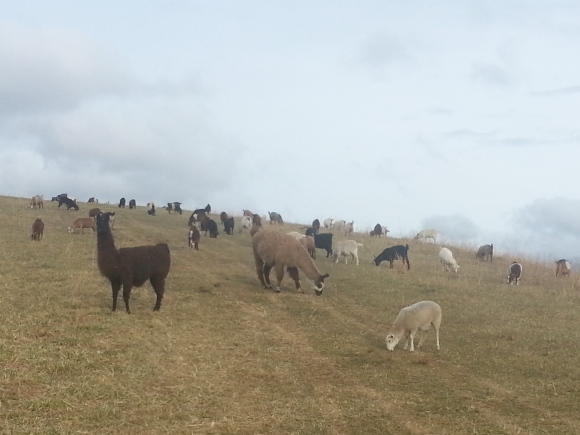
Mama Bear
We’ve been seeing bears off and on at Crooked River, and signs of it (scat) for the past couple of years. I’ve offered a 6-pack of beer to the first guy who actually got a picture of one, and Jamie Scott, our crew lead, finally caught this one today. She had a cub with her, but Jamie couldn’t get a picture with her.
Bears are becoming a much more common sight in Floyd lately. Even though there are fewer bear hunters than in years past, “harvests” have been up almost 8% per year or the past decade or more here in the VA mountains. In fact, it’s reported that there are more bears in Virginia now than anytime in the past 400 years.
All the neighbors have reported bear sightings. As a female bear’s territory ranges anywhere from 1 sq mile (640 acres) to 50 sq miles, we could all being seeing just this one bear. But since territories can overlap, we may be seeing more than just this one. One nearby neighbor reports a “problem bear”, one that gets into his garbage, pet food, bird feeders, or any potential food source he leaves out. Since we currently feed some of our cats outside, and have numerous bird feeders, we’ll likely have to change our practices when we move to Crooked River.
Interesting tidbits about black bears – 90% of the food they eat is vegetative, but most of the protein they get comes from insect larvae such as ants, termites, and yellow jackets. They don’t really hibernate – they can be easily roused in the wintertime, which is when they also bear their cubs, anywhere from 1-5 of them, but only every other year once the female reaches sexual maturity. There are now an estimated 1 million black bears in North America – the largest population and largest range of any bear. Unprovoked black bear attacks are extremely rare, and there reportedly has not been a single one in Virginia.
So we’ll be more than happy to “home” this bear, and will appreciate seeing her when she deems to make herself known, and be very careful not to tempt her from her wild ways with such freebies as Purina cat chow on the porch.









Recent Comments